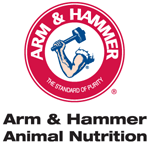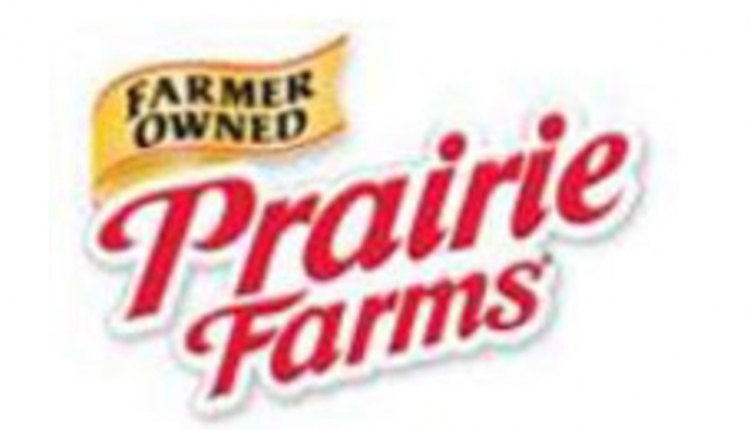
The impending flip of the calendar page to a new year has many folks thinking of what lies ahead. That’s a fitting task, since the dairy industry is rapidly changing, and it’s imperative that you stay ahead of the trends or risk falling behind.
“To keep your herd and your business healthy, there are three key health and nutrition trends that you should monitor and plan for in 2018,” says Dr. Elliot Block, ARM & HAMMER™ Senior Research Fellow & Director of Technology. “These areas represent very real opportunities for you to positively affect your farm and the health of your herd in the coming New Year—and beyond.”
1. Defend against Clostridia
Clostridia bacteria are everywhere!
“Clostridia species have been identified in more than 99 percent of fecal samples and 73 percent of TMR samples,” notes Dr. Block. The bacteria live in the soil and continually make their way into feedstuffs, causing various challenges to your animal’s health and productivity.
That means cows constantly ingest low-level counts of clostridia as a result of this widespread, underlying presence, increasing your cattle’s vulnerability to high-stress events. Even low levels of clostridia per pound of feed add up quickly because of the large amount of feed cows consume each day. Problems arise as bacterial loads increase and stresses create a tipping point for disease and performance deficiencies.
From the fecal and TMR samples, more than 69,000 clostridia isolates, or strains, have been harvested.
About half of these clostridia isolates (53.9 percent) make up a well-known toxigenic species, Clostridium perfringens, which has a negative impact on gut health and can lead to digestive issues such as hemorrhagic bowel syndrome (HBS).
The other portion (46.1 percent) are mostly made up of Clostridia that produce metabolic end products that have a negative impact on rumen efficiency.
What if you could take on these problem-causing bacteria with every bite of feed?
“By targeting each of these groups we are able to identify which combination of Targeted Microbial Solutions™ in our CERTILLUS™ portfolio—which features proprietary Bacillus strains—would best inhibit the growth of these organisms on-farm,” Block explains.
The resulting decrease in harmful clostridia enhances cow health by increasing feed efficiency and reducing digestive upsets, off-feed events, inconsistent feed intakes, and more severe outcomes such as HBS. Additionally, harnessing Bacillus over the long-term results in changes to the microbial diversity that makes up the Microbial Terroir™ of your farm.
2. Defeat mycotoxins.
Do you have a mycotoxin problem in every load of feed? Mycotoxins occur more commonly than most people imagine, and the majority of samples contain two or more species. Surveys of the 2017 crop indicate that globally, 94 percent of all samples contained at least one mycotoxin, and 75 percent of all samples contained two or more mycotoxins. In North America, deoxynivalenol (DON) and fumonisin (FUM) were the most prevalent mycotoxins in feed samples, detected in 78 percent and 60 percent of samples respectively.1
Research shows that Refined Functional Carbohydrates™ (RFCs™) found in CELMANAX™ can positively counteract the effects of mycotoxins, rendering them harmless as they pass through the intestinal tract. RFCs act as an insurance policy against the clinical and subclinical consequences of mycotoxins. Keep in mind that low levels of mycotoxins may not result in clinical issues, but become more insidious and lead to subclinical problems.
“Why are you monitoring for the presence of mycotoxins, when you already know they are in your feed ingredients?” Block asks. “Investing in a cost-effective insurance program to reduce mycotoxin effects is a much more efficient and valuable solution. RFCs offer a unique solution by counteracting several mycotoxins while enhancing animal performance. They don’t take up ‘extra’ space in the ration like some binders and offer dairies an excellent protection program.”
3. Drive rations harder.
Make your ration work harder. Times may be tight, but that means it’s no time to accept the status quo from your nutrition program. Feed ingredients in rations must be as effective as possible—especially when it comes to fatty acids. Just as not all protein sources are the same, it is important to remember that not all fatty acid supplements are the same.
Fatty acid supplementation in general has been shown to increase milk yield, milk fat yield and the efficiency of milk production, but significant variation has been reported in production performance for different fatty acid types, and, indeed, for the same supplement across different diets and studies.
“Researchers note that all fatty acids are not created equal when it comes to effectiveness in a diet,” cautions Block. “In fact, there are distinct differences among fatty acid digestion, metabolism and impacts on milk production.”
The key is to know what fatty acids are present in the supplement, particularly the fatty acids’ chain length and degree of unsaturation. The digestibility of the fatty acid supplement, as well as its potential interaction with other dietary factors, is important in determining the value of the supplement.
For instance, only MEGALAC’s® C18:1 increases energy corrected milk (ECM) while maintaining body condition. However, studies show that products with higher levels of C18:0 may increase dry matter intake (DMI) but have no effect on yields of milk or milk components. Products that contain C16:0 increase ECM and did not affect DMI in both fresh and peak periods.
You owe it to your bottom line—and your cows—to push your ration to work as hard as you do.
To learn more, visit www.AHanimalnutrition.com.
About ARM & HAMMER
ARM & HAMMER, with headquarters in Princeton, N.J., is a worldwide leader in providing the broadest portfolio of microbial and nutrition solutions and services backed by an unmatched research and development pipeline. To learn more about ARM & HAMMER, visit www.AHanimalnutrition.com.
1 Regional Results of Global Mycotoxin Occurrence Through September 2017. Available at: https://www.biomin.net/en/blog-posts/regional-results-of-global-mycotoxin-occurrence-through-september-2017/. Accessed December 8, 2017.





